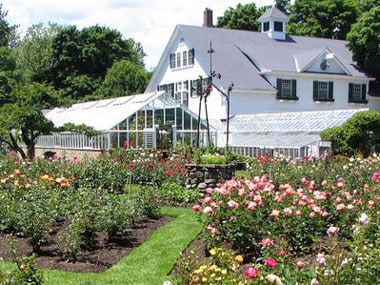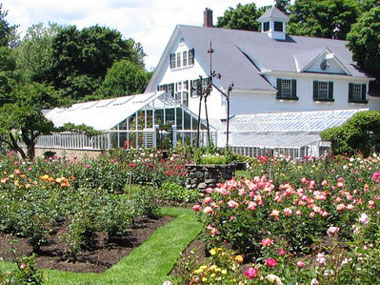TheDelhi Development Authority’s (DDA) new farmhouse policy is changing the market dynamics in the the city’s luxury residential segment. Potential buyers of DLF’s premium Gurgaon project and South Delhi’s most sought after addresses are now flocking to the new ‘country homes’ that are within the city limits.
With an expected increase in supply, the prices in the premium segment in South Delhi are already on a downward spiral.
The DDA had last year regularised all farmhouses that came up prior to February 7, 2007, in the proposed urban extension areasby allowing construction of up to 20-30 percent of the floor area ratio (FAR). These properties were also re-designated as ‘country homes’.
FAR is the total square feet of a building divided by the total square feet of the plot the building is located on.
For instance, FAR of two means the total floor area of a building is two times the gross area of the plot on which it is located.
[caption id=“attachment_1187181” align=“alignleft” width=“380”]
 The DDA had last year regularised all farmhouses that came up prior to February 7, 2007, in the proposed urban extension areas by allowing construction of up to 15 percent of the floor area ratio (FAR). These properties were also re-designated as ‘country homes’.[/caption]
The DDA had last year regularised all farmhouses that came up prior to February 7, 2007, in the proposed urban extension areas by allowing construction of up to 15 percent of the floor area ratio (FAR). These properties were also re-designated as ‘country homes’.[/caption]
The new policy is a bonanza for owners of plush farmhouses as it means they can build a structure of 2500 square metre in a farmhouse covering an area of 1,000 sq m. The additional units on the farm land can either be sold or rented out at massive premiums.
According to an official estimate, there are 2,731 farmhouses in Delhi as of now. With the policy in place.square yard Approximately 50,000 hectares will be converted from agricultural use to either low-density residential or country homes,
Until September 2013, farmhouses in Delhi were only permitted on a minimum 2.5-acre plot of land, hence the number of farmhouses in the capital was limited**,** but the new farmhouse policy would permit construction of 10,000 square feet on one-acre plots too. The new policy also states that the green belt area will be expanded to the peripherals of the NCR and will accommodate only residential construction and not commercial. In other words, you will see a lot more farmhouses on that stretch.
This would mean that a few thousand farms would be added to the existing number. Moreover, due to policy paralysis, those who did own farmhouses were unable to construct anything for the last six years. “We had to pay a bribe of Rs 20-30 lakh to for an additional unit of construction. With the new policy in place, I do not have to worry about red-tapism at all,” says aChhattarpur-based farm owner on condition of anonymity.
For several farm owners like him, the policy is a blessing in disguise as earlier despite owning huge land grounds construction was limited.
A lot of people who were sitting on the fence as they did not want to get into anything illegal to stay in a farmhouse will now come into the market, he added.
Hence, for the kind of money one spends on a builder floor in a posh South Delhi colony, one can stay in a farmhouse, complete with plush lawns and even a swimming pool. Construction of farmhouses may soon be allowed by the DDA in 26 villages falling in the green belt area, most of them in South Delhi areas such as Asola, Chhattarpur and Satbari.
The new proposals have, however, put farmhouses in direct competition with independent houses in some of the posh localities in Delhi, including Shanti Niketan/West End, Golf Links, Jor Bagh, Panscheel and Sunder Nagar.
While the new ‘country homes’ would be allowed a higher FAR of 20, this could be further increased to 30 after paying additional charges. The DDA is chargingRs 25.5 lakh approximately per acre as conversion charges, which amounts to Rs 63 lakh per hectre. On one hectare, up to 5 FAR is being regularised free of charge in the six-month window which ends on 20 March 2014.
Last month, theurban development ministry issued a notice anddefined farmhouses located in South Delhi, Central Delhi and Dwarka as category-I farmhouses and specified the charges to be payable by their owners for regularisation if the built-up area exceeds the permissible limit.
Apart from investment, theseone-acre farmhouses would serve as the perfect second homes or weekend getaway options for many.
“The new farmhouse policy has already seen an impact on prices of builder floors and apartments in many upscale South Delhi localities, because the consumer now has an alternative in an already depressed market.People spending the same kind of money on a 800 square yard flat in South Delhi would obviously prefer a one-acre property, construct 10,000 square feet and live lavishly in a location that is not too far from the city centre,“saysMudassir Zaidi, regional head north, at real estate research firm Jones Lang Laselle.
Residential floors in South Delhi upmarket colonies such as Panchsheel Park, Green Park, Neeti Baugh, and Defence Colony are selling at lower rates compared with a year ago.A 1,000 square yardindependent house in Panscheel, which was priced about Rs 100 crore two year ago,today commands nothing more than Rs 65-Rs 70 crore due to dearth of end-users. Most investors today are pumping in money into farm land rather than South Delhi colonies.
According to Zaidi people have already started acquiring land for constructing farmhouses ever since the draft rules were notified a year back. This is evident from the fact that land prices in the peripherals have shot up even as South Delhi prices have dropped. In fact theland prices started skyrocketing three years ago in anticipation of this farmhouse policy.
High Networth Individuals (HNIs), investors and local builders started buying land in villages around the cities leading to a price appreciation of more than 100 percent. Land around Delhi’s farmhouse area, costs anything between Rs 1.5 and Rs 5 crore per acre.
In Delhi there is not too much open space and parking is always a headache. “One-acre farmhouse has come forward as strong competitor to plush flats of South Delhi areas. Many people have started opting for farmhouses. Earlier, this was not possible as the norm of one-acre farmhouse was not there,“added Zaidi.
“NRIs today are willing to wait for another six months or a year if they are hell bent on buying an independent floor in a South Delhi colony. For as soon as these farm houses come up, property prices here will plummet. Currently,300 square yard floors in Saket are trading at Rs 4.5 crore to Rs 5.5 crore compared with Rs 6 crore to Rs 6.5 crore a year ago, while prices in upscale Vasant Vihar are down to Rs 8 crore from Rs 11 crore a year-earlier, " a South Delhi broker told Firstpost on condition of anonymity.
Most of these flats are lying vacant and are not even being traded.
“It’s a complete buyer’s market as builders are desperate. Wait a little longer, and you will get a killer deal,” he added.
On the other hand, the farm land is also turning speculative as several brokers and agents are buying land there in order to resale it to investors at a higher price.B rokers claim companies like DLF, IREO, and Emmar MGF have also bought several acres.
So with the government finally allowingsmaller, brokers and deal-makers expect valuations to at least double in the near future as farm owners try to leverage the new scheme.
)